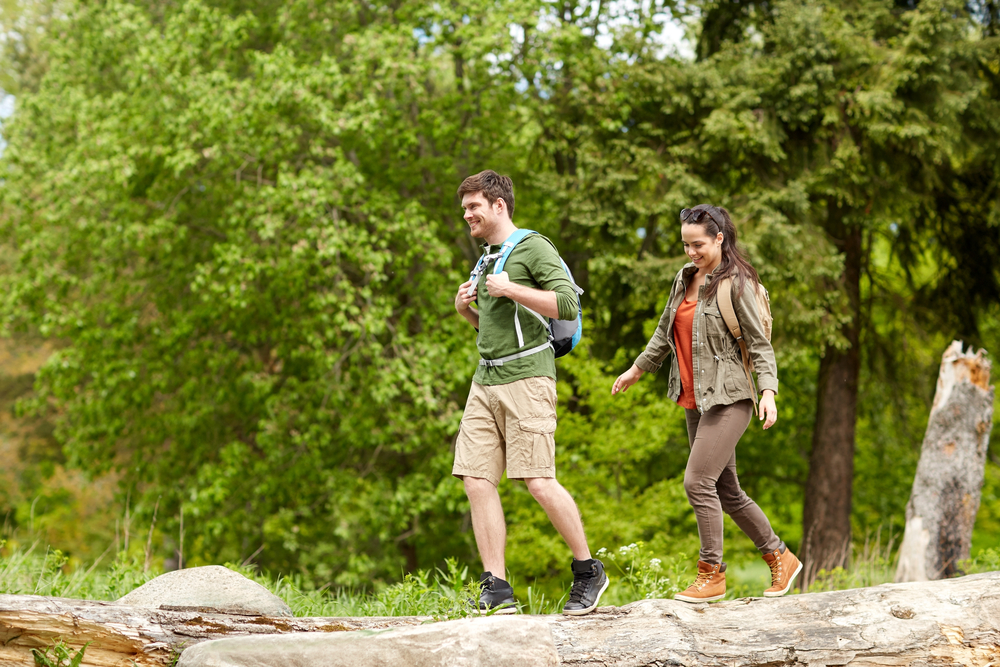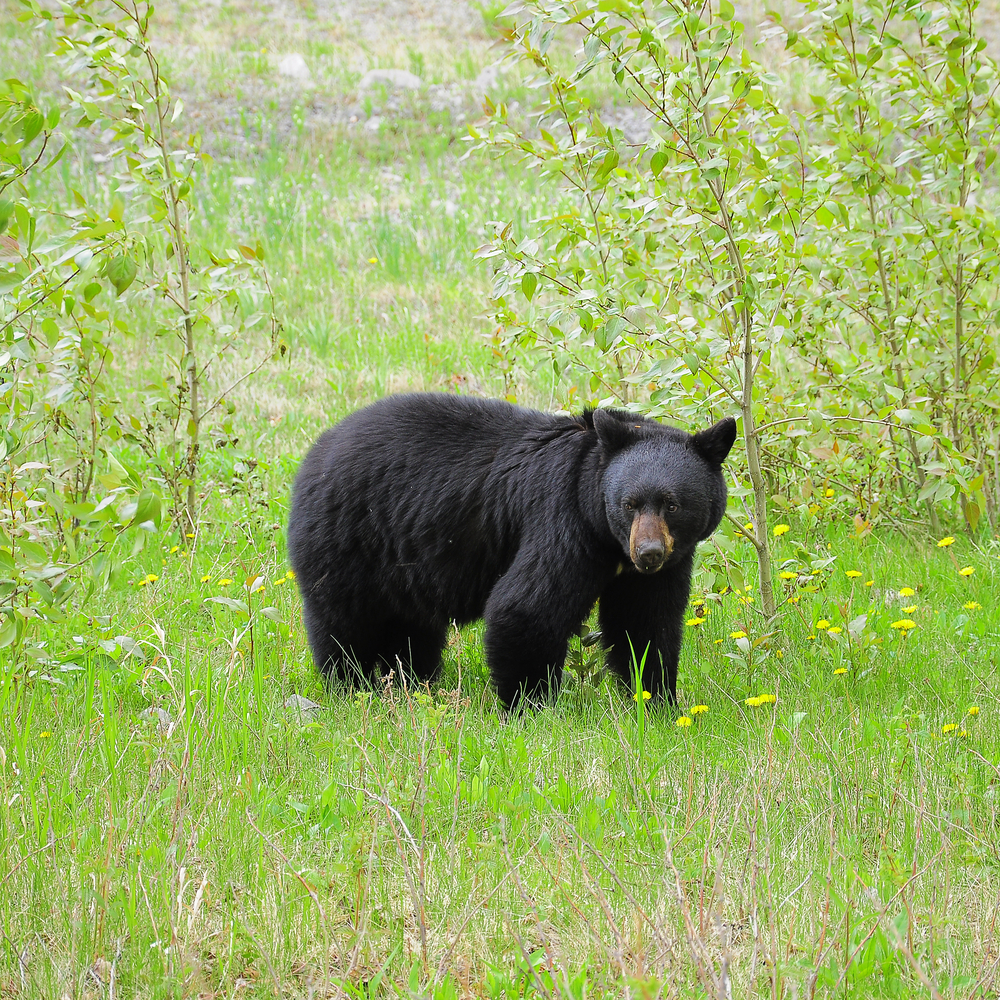
With better than 800 miles of well-maintained trails lacing its backcountry, Great Smoky Mountains National Park ranks among the finest hiking destinations in the country. If you’ve never laced up hiking boots in this lush, rugged, history-soaked sanctuary in the Southern Appalachians—and especially if you’re fairly new to hiking in general—you may have well have a few qualms about striking off from the trailhead. Just how safe are the Great Smokies for the foot traveler?
Well, the short answer is: quite safe. You’re in much more danger driving to (and within) the park than you are treading along one of the park footpaths. Hiking here, though (as anywhere), does demand some savvy preparation and common-sense precautions, some of which we’ll run through in this article.
Hiking Accidents in Great Smoky Mountains National Park
An average of 38 serious injuries resulting from walking or hiking occur in Great Smoky Mountains National Park every year, according to the park’s website. (For comparison, an annual average of 50 such injuries stem from motor vehicle accidents in the park.)
When you consider more than 11 million people visit this most-popular of U.S. national parks every year, and that more than 400,000 on average explore its backcountry trails, this average tally suggests how safe, overall, hiking in the Great Smokies really is.
Hiking Hazards in the Smokies
All things considered, the main dangers when it comes to Smoky Mountain hiking are ill preparation and carelessness: in other words, elements very much in your control.
Failing to pack or dress appropriately for the rigorous and changing conditions of the Smoky Mountain backcountry can leave you variously cold, wet, hungry, parched, injured, or all-out lost. If you’re careless or reckless, meanwhile, you can also easily get hurt—falling at an overlook or on the slick rocks around a waterfall, for example—or become thoroughly turned around.
The danger posed by black bears, likely the most famous native wildlife in the Great Smokies, is majorly overstated, and it’s safe to say most injuries resulting from bear encounters are more the fault of the person than the bruin. That said, bears can be unpredictable, and they’re certainly powerful enough to treat with extreme respect. We’ll cover the nuts and bolts of bear safety later in this article.
From thunderstorms with risky lightning and wind gusts to treacherously muddy trails and high-running streams, there are other potential hazards to hikers out there in that beautifully wild backcountry of the Great Smoky Mountains, but proper packing and preparation and retaining awareness and alertness on the go significantly reduce the likelihood of major mishaps.
Preparing for Smoky Mountain Hiking

Whether you’re heading out for an afternoon hike or a week’s worth of backpacking, you need to bring the so-called “Ten Essentials” of outdoor recreation: a concept first formalized in the 1930s by The Mountaineers, a Seattle, Wash.-based climbing organization. It was originally presented as a list of specific items; it’s since been modified slightly into a checklist of critical systems that all outdoors people should account for to safeguard themselves against potential emergencies and survival situations.
Here are the Ten Essentials as defined by The Mountaineers, with notes on the tools and supplies that fulfill each of the critical systems:
- Navigation: You should have a hardcopy map—in the case of the Great Smokies, we recommend both the park trail map plus the pertinent topographic maps showing terrain features in greater detail—with you on the trail (and most definitely off the trail). You also should have a compass and know how to use it. Feel free to use GPS receivers, satellite messengers, smartphone apps, and other modern mapping tools for navigation, but don’t rely on them alone; your paper map(s) and your compass will have your back in the event the electronic gadgets konk out.
- Sun Protection: Use sunscreen and wear protective clothing and accessories—long sleeves, a hat, sunglasses—to protect yourself against UV rays.
- Insulation: Always carry extra layers—including raingear shells, mighty handy in the well-watered Great Smokies—in case you run into inclement weather or have to endure an unexpected night or two out.
- Illumination: Never hit the trail without a headlamp and/or flashlight, plus extra batteries. More than a few hikers have misjudged how long it’ll take them to complete a circuit, and find themselves with miles yet to go and night fast falling.
- First Aid: You should have a fully stocked first-aid kit in your backpack and some basic knowledge on how to treat injuries and illnesses in the backcountry.
- Fire: Carry matches, a lighter, and fire-starting materials in a waterproof container, even if you aren’t backpacking. An emergency fire can be a legitimate lifesaver, whether it’s used for warmth, to boil water, or to signal distress to potential rescuers.
- Repair Kit/Tools: No tool’s more important than a quality knife, but everything from a sewing kit to duct tape can come in real handy for mend split packs, torn garments, or constructing a makeshift stretcher or protective shelter.
- Nutrition: Bring some extra, energy-rich snacks in addition to what you plan on munching on during your hike as insurance.
- Hydration: Tote plenty of water to stay hydrated (more on that shortly) as well as a water filter/purifier and/or chemical tablets for treating natural water sources.
- Emergency Shelter: From a tarp or poncho to a lightweight tent, carry the means to shelter in the backcountry in the event of bad weather or an emergency that keeps you out in the wilds for an extended period.
Just as important as packing the right supplies, you should inform somebody back home—or a family member or friend staying behind at the campsite or vacation rental—of your hiking itinerary. A trusted person who knows where you’re hiking and how long you intend to be gone can make search-and-rescue operations much more effective should they be necessary.
Also: Check the weather forecast carefully and check in with park rangers or staff to find out up-to-date trail conditions before setting off.
Water

A common mistake even among veteran hikers is failing to adequately hydrate. We often don’t remember to drink water until we’re thirsty, at which point we’re already a bit dehydrated. A rough rule of thumb is to drink at least a quart of water per hour when hiking; if it’s a sweltering summer’s day, increase that intake significantly. Common signs of intensifying dehydration include headaches, nausea, dizziness, and dark-colored urine.
You either need to pack along enough water to see you through a hike, or rely on natural water sources in the mountains, all of which should be properly treated to avoid waterborne illness. As we’ve already mentioned, even hikers who plan to rely on the water they’ve brought to the trailhead should pack the means to filter/purify water just in case they’re kept out in the backcountry longer than expected. In a pinch, remember that boiling water is an effective way to make it safe to drink.
Bear Safety

Roughly 1,500 black bears are thought to inhabit the Great Smoky Mountains, and you’ve got a decent chance of seeing one or more of them during your visit. Many bear sightings occur along roads and in campgrounds, but it’s not uncommon for hikers to run into these glossy, galumphing omnivores as well.
If you do see a bear near or on the trail, give it plenty of room: You should stay at least 50 yards away. Allow it to pass through the area (and cherish the sighting of one of the Southern Appalachians’ most magnificent native critters). If the bear doesn’t move off, back away while keeping an eye on the animal, and then either head back to the trailhead or make a very generous detour around the area. If the bear appears agitated—huffing, gnashing its teeth, flattening its ears, cuffing the ground—you’re definitely too close from its perspective, and you should exit the area; do so calmly and slowly, keeping your face turned toward the bear, and speak in a normal voice as you do so.
In the rare event a black bear approaches you on the trail with an intent look, showing none of the aforementioned signs of agitation, you should make yourself appear as large as possible, shout, and—if the animal continues to advance upon you—throw rocks or branches, or use bear spray.
Learn More About Hiking Safety
For more insights into hiking safety and tips on dealing with backcountry emergencies, check out this primer!